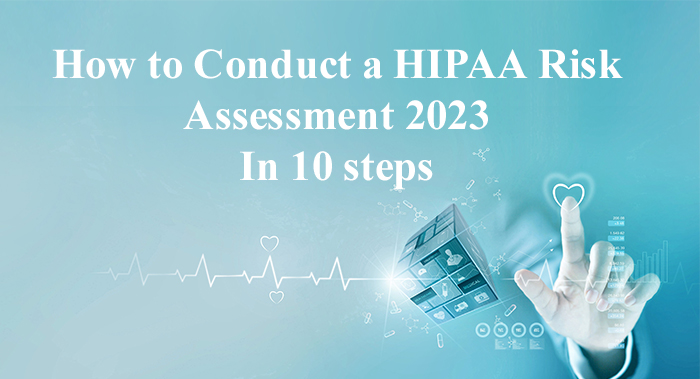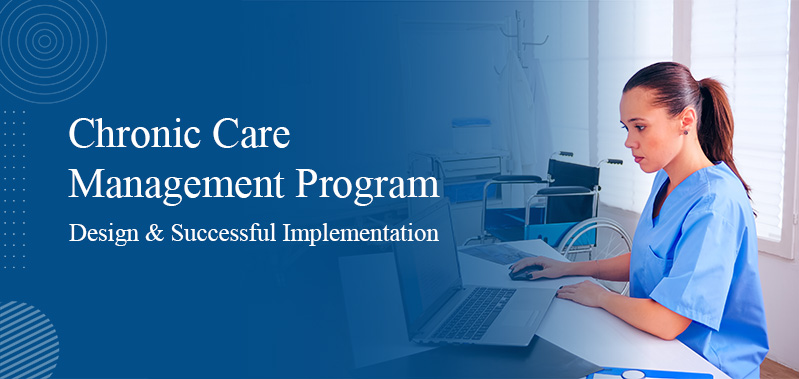
How to Conduct a HIPAA Risk Assessment 2023 in 10 Steps
A HIPAA Security Risk Assessment is necessary for compliance with the HIPAA Security Rule for Covered Entities and Business Associates. Conducting a HIPAA Security Risk Assessment can be daunting, but ensuring the confidentiality and privacy of patients' sensitive information is necessary.
It comprehensively evaluates an organization's security controls and processes related to Protected Health Information (PHI) to identify potential risks and vulnerabilities. By performing a risk assessment, covered entities, and business associates can better manage potential threats to PHI and comply with HIPAA regulations. However, it's important to note that a HIPAA risk assessment is not just a compliance requirement but a crucial aspect of a robust information security program. With this article, you'll better understand the HIPAA risk assessment process, which will help you fulfill your most important HIPAA compliance obligations and safeguard patients' privacy and confidentiality.
Here are the ten steps which can help in doing a HIPAA Risk assessment
1. Develop scope for assessment:
The first step in conducting a HIPAA risk assessment is to establish the scope of the assessment by identifying which areas of your organization will be included. This could involve particular departments, locations, or information systems. It's crucial to cover all PHI systems and departments, including billing and coding. Conversely, departments like maintenance that don't manage PHI can be excluded. However, it's essential to consider any possible indirect risks to PHI, such as HVAC and electrical systems, that could affect your on-site servers.
2. Recognize Your Assets:
To effectively manage risks, it’s crucial to identify your organization's assets, including hardware, software, and data, such as electronic health records and medical devices used to store and transmit patient information. Determining the extent to which each asset contains, transmits, or interacts with PHI is crucial. For example, a file server that stores multiple files containing PHI should be categorized as “High” risk, whereas a portable EKG machine that doesn’t keep PHI may be classified as “Low” risk. This step enables prioritizing which assets need the most attention regarding risk management.
3. Examine Potential Threats
After Examining your organization's assets, it's crucial to determine potential threats to those assets, including cyberattacks, natural disasters, and human mistakes. You should take into consideration all possible threats, whether they are technical or non-technical.
Threats typically originate from a threat source. According to NIST, there are four main types of threat sources:
1) Hostile physical or cyber-attacks
2) Human errors resulting from negligence or deliberate actions;
3) Failures of organization-controlled resources such as software, hardware, or environmental controls.
4) Natural or manufactured disasters, accidents, and failures outside the organization's control.
4. Should know Potential Vulnerabilities
Vulnerabilities are weaknesses or flaws in an organization's security system, internal controls, or procedures that a threat source can exploit. Vulnerabilities may be technical, such as outdated software or weak passwords, or non-technical, such as a lack of employee training or documented policies and procedures. Additionally, predisposing conditions may increase the likelihood of an attack, such as the nature of the data being protected. For example, healthcare organizations are particularly vulnerable since PHI is highly valuable to cybercriminals. Identifying all vulnerabilities is essential to ensure that risks are accurately assessed and managed.
5. Assess Current Security Measures:
To ensure the efficacy of your security measures, it is crucial to evaluate them by the HIPAA Security Rule's administrative, physical, and technical safeguards. Performing a risk gap analysis can facilitate the comparison of your current measures with the mandated safeguards.
6. Analyze Risks:
To effectively manage risks, it's crucial to analyze the potential threats to your organization and prioritize them based on their likelihood and potential impact. There are two common approaches to risk analysis: qualitative and quantitative. The qualitative approach involves evaluating risks based on subjective criteria such as probability and severity of impact. In contrast, the quantitative approach uses statistical analysis to assign values to risks and estimate their financial implications. By choosing the appropriate method, your organization can effectively allocate resources to mitigate risks and protect your assets.
7. Creating a proper risk management Plan:
Developing a risk management plan is crucial to effectively addressing potential risks. It involves establishing a structured process encompassing various features, including policy creation and enforcement, regular employee security training, and technical safeguards. An effective risk management plan begins with a thorough risk assessment to identify potential threats and vulnerabilities.
8. Execute Risk Management Plan:
Once you have formulated a risk management plan, it is time to implement the measures identified to minimize risks. This includes revising policies and procedures, providing employee training, and installing technical safeguards. It is essential to work closely with IT personnel, human resources, and other departments to guarantee proper execution. When incorporating technical safeguards that may block suspicious activity, adopting a phased approach to rolling out changes is critical.
9. Keeping track of your Planning:
Once you have implemented your risk management plan, it's essential to monitor its efficacy and make adjustments as necessary regularly. This entails continuous employee education, training, and ongoing security measure monitoring. By keeping tabs on your plan, you can quickly identify new hazards and take the appropriate measures to avoid or reduce potential security incidents. Maintaining transparent communication with relevant stakeholders and keeping the plan current with evolving security risks and compliance requirements is critical.
10. Reevaluating the Risk Assessment:
It's important to understand that conducting a risk assessment and implementing a risk management plan is ongoing. Threats and vulnerabilities can change over time, and it's necessary to reassess risks periodically to ensure that your organization remains HIPAA compliant. Your risk management plan should be a dynamic document regularly updated and optimized after each risk assessment. Conducting risk assessments at least once a year is required, but performing them every six months is recommended. By keeping up with emerging threats and reassessing risks, you can ensure your organization stays secure and protected.
In conclusion, conducting a HIPAA risk assessment is critical for safeguarding PHI. These ten steps can help organizations identify potential threats and vulnerabilities, develop a risk management plan, and effectively implement measures to protect PHI. Regularly reviewing and updating the risk assessment ensures the organization's security posture remains effective not just in 2023 but also in the future.




